

Օգս . 16, 2025 04:40 Back to list
In the vanguard of sustainable resource management, the eddy current separator stands as a cornerstone technology, enabling the efficient recovery of non-ferrous metals from complex waste streams. This advanced separation equipment operates on the principle of generating induced eddy currents within conductive materials, causing them to be momentarily repelled from a rapidly rotating magnetic field. This repulsion effectively ejects the non-ferrous metals from the main material flow, allowing for their clean collection and subsequent reintroduction into the manufacturing cycle. From municipal solid waste (MSW) and incinerator ash to end-of-life vehicles (ELVs) and electronic waste (WEEE), the application of sophisticated Eddy Current Separators is pivotal for achieving higher purity rates in recovered materials, significantly reducing landfill waste, and conserving finite natural resources. The increasing demand for recycled content across various industries underscores the indispensable nature of this technology, positioning it at the heart of the circular economy. The meticulous design and engineering of these systems ensure not only high throughput but also exceptional separation efficiency, critical factors for operations striving for both environmental stewardship and economic viability in today's highly competitive recycling landscape. Its ability to process diverse input materials with remarkable precision makes it a universally adopted solution for non-ferrous metal recovery.
The global recycling industry is currently experiencing a transformative phase, driven by stricter environmental regulations, escalating raw material costs, and a growing consumer awareness of sustainable practices. Within this context, the market for the eddy current separator is expanding rapidly, particularly for applications like eddy current separator aluminium recovery, which is a high-value material. Aluminium, a lightweight yet durable metal, is infinitely recyclable, and its recovery via advanced eddy current technology consumes significantly less energy (up to 95% less) compared to primary production. This energy efficiency, coupled with the rising demand for secondary aluminium, is a primary driver for investment in state-of-the-art separation solutions. Furthermore, the diversification of waste streams, including the proliferation of electronic waste containing various valuable non-ferrous metals, necessitates highly efficient and specialized separation techniques. The trend towards integrating mobile processing units, such as the mobile eddy current separator, is also gaining traction, offering flexible, on-site recycling capabilities that reduce transportation costs and environmental footprints for smaller operations or temporary sites. These evolving market dynamics underscore the essential role of robust and adaptable eddy current separation technology in achieving high-purity metal fractions and maximizing economic returns from waste.
The demand for precise and efficient non-ferrous metal recovery is not limited to aluminium; the need for a versatile eddy current non ferrous metal separator extends to copper, brass, zinc, and other conductive materials found in mixed waste. The increasing complexity of waste compositions, often involving composites and multi-material products, poses significant challenges for traditional sorting methods. Here, the intrinsic physics of eddy current separation provides a superior solution, capable of differentiating and expelling materials based on their electrical conductivity, largely irrespective of their shape or size within operational limits. This technological advantage ensures that businesses can meet stringent quality specifications for recovered materials, enhancing their marketability and reducing reprocessing needs. Moreover, the integration of artificial intelligence and advanced sensor technologies with eddy current systems is an emerging trend, promising even higher levels of separation accuracy and automation, further solidifying the position of eddy current separation as a pivotal technology in the future of resource recovery and circular economy initiatives worldwide. The strategic deployment of these advanced separators offers a competitive edge in extracting maximum value from discarded resources.
The manufacturing of a high-performance eddy current separator is a sophisticated process that demands precision engineering, premium materials, and rigorous quality control. It typically commences with the selection of high-grade components, including robust stainless steel for the conveyor frames and separation chutes (often SUS304 or SUS316 for enhanced corrosion resistance, particularly relevant in industries like petrochemical or wastewater treatment where harsh environments are common). The heart of the system—the magnetic rotor—is meticulously engineered using powerful rare-earth magnets (e.g., Neodymium-Iron-Boron, NdFeB) arranged in a specific configuration (eccentric or concentric, depending on application) to generate an intense, rapidly changing magnetic field. Manufacturing processes like advanced CNC machining are employed for critical components to ensure extreme dimensional accuracy, crucial for the high-speed operation and consistent performance of the separator. Precision welding and fabrication techniques are also applied to construct the robust mechanical structure that withstands continuous operation and abrasive materials. Every component, from the motor to the belt system, undergoes stringent quality checks to meet international standards such as ISO 9001 for quality management and ANSI standards for mechanical integrity. This rigorous approach ensures an exceptional service life, often exceeding 10 years with proper maintenance, significantly contributing to a lower total cost of ownership.
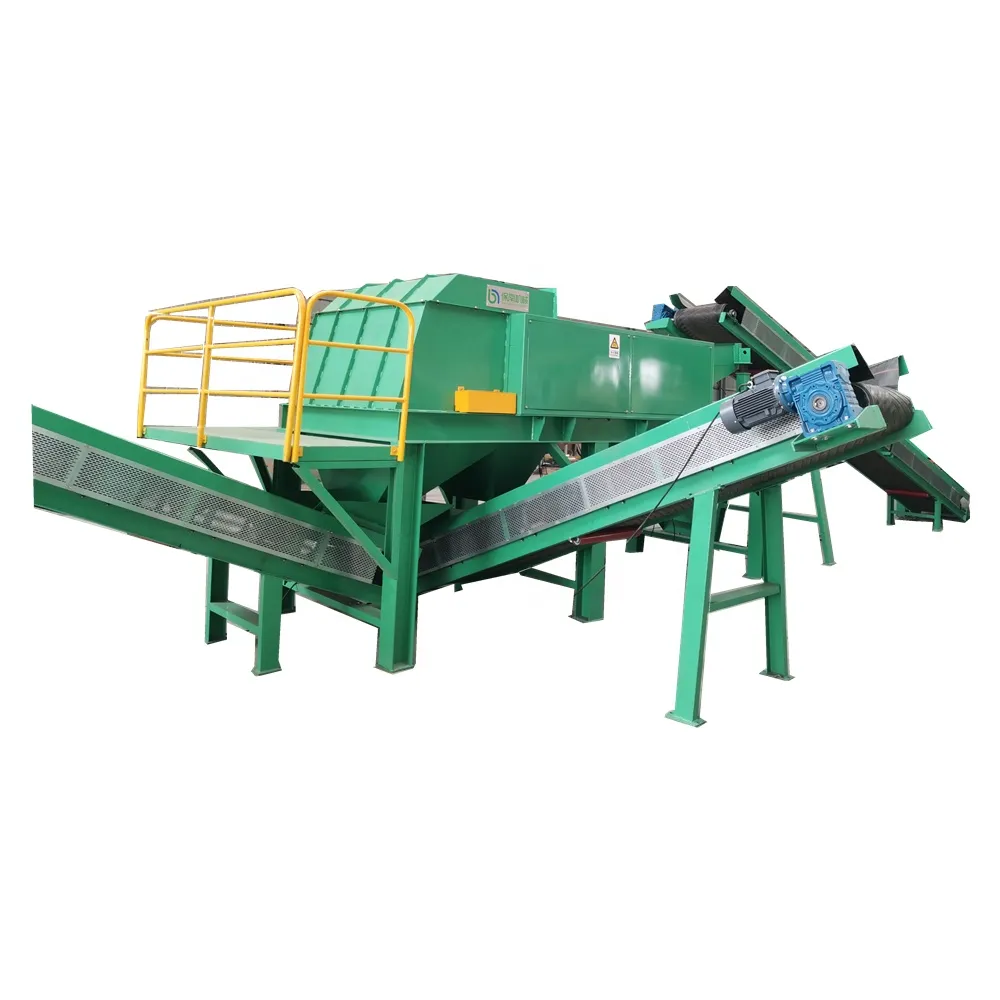
Precision manufacturing ensures optimal performance and durability of Eddy Current Separators.
Beyond material selection and fabrication, the assembly of the eddy current separator involves expert alignment and calibration of the magnetic rotor, conveyor belt, and splitter mechanism to achieve optimal separation efficiency. Each unit undergoes comprehensive factory acceptance testing (FAT) before shipment, simulating real-world operating conditions to verify performance parameters such as separation purity, throughput capacity, and energy consumption. Energy efficiency is a key design consideration, with advanced motor and drive systems implemented to minimize power draw while maximizing separation force, resulting in substantial operational cost savings. For instance, modern ECS units can achieve energy savings of up to 15-20% compared to older designs, directly impacting the profitability of recycling operations. Furthermore, the design incorporates features to enhance operational safety and ease of maintenance, with accessible service points and durable wear parts. The commitment to these manufacturing disciplines and adherence to global standards not only extends the product's lifespan but also ensures its reliable performance in demanding environments across industries like metallurgy, waste management, and even specialized applications in chemical processing or food recycling where material purity is paramount. This holistic approach from design to testing guarantees a robust and efficient solution for non-ferrous metal recovery.
Understanding the technical specifications of an eddy current non ferrous metal separator is crucial for selecting the right model to meet specific operational demands. Key parameters include the belt width and speed, the magnetic rotor diameter and speed (RPM), and the number of magnetic poles. These factors directly influence the separation effectiveness and throughput capacity. For instance, wider belts and higher belt speeds typically correlate with increased processing volumes, while a larger rotor diameter and higher rotational speed generate a stronger magnetic field, crucial for separating smaller or less conductive non-ferrous particles. Separation efficiency, often measured as the percentage of non-ferrous metals recovered from the input stream with a specified purity, is a critical performance indicator. A typical high-performance eddy current separator can achieve up to 98% recovery of non-ferrous metals, with a purity level of recovered fractions exceeding 95%, depending on the input material's characteristics. Energy consumption, typically ranging from 7.5 kW to 30 kW for larger industrial units, is also a vital consideration for operational expenditure, highlighting the importance of energy-efficient designs that minimize power draw without compromising performance.
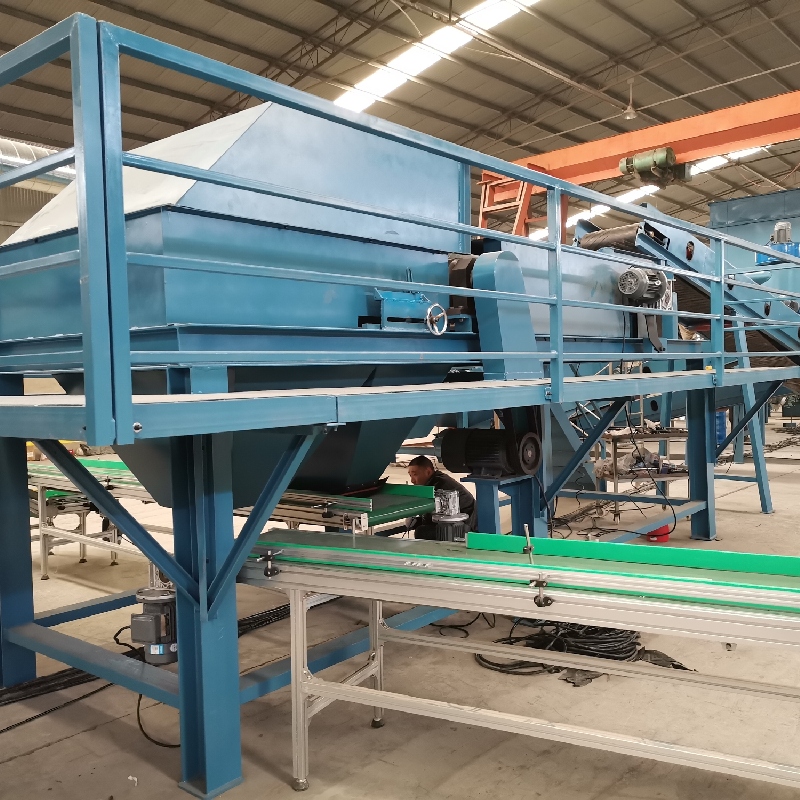
Detailed technical specifications ensure optimal system integration and performance.
Beyond these core parameters, customization options further enhance the utility of an eddy current separator. This includes variable speed drives for precise control over the magnetic field, adjustable splitter mechanisms for optimizing separation points, and specialized belt materials for abrasive or high-temperature applications. The ability to fine-tune these parameters ensures maximum recovery and purity for diverse material streams, from shredded automobile scrap to finely processed electronic waste. These advanced features allow operators to adapt the separator's performance to specific material characteristics, such as particle size distribution, moisture content, and the presence of fine dust, which can all impact separation efficiency. The strategic selection and configuration of an eddy current separation system, guided by detailed technical specifications and expert consultation, are paramount to achieving highly efficient and profitable non-ferrous metal recovery operations, making it a critical asset in modern recycling facilities seeking to maximize their resource recovery efforts.
The versatility of the eddy current separator allows for its deployment across a broad spectrum of industries and waste processing applications, making it an invaluable asset for resource recovery. In the waste management sector, it is indispensable for extracting non-ferrous metals from municipal solid waste (MSW) streams, facilitating the recycling of materials that would otherwise end up in landfills. A prominent application is the efficient separation of eddy current separator aluminium from mixed fractions in material recovery facilities (MRFs) and specifically within recycling of shredded cans and packaging. Beyond MSW, ECS units are crucial in incinerator ash processing, where they recover valuable non-ferrous metals like copper, brass, and aluminium from the post-combustion residue, transforming waste into revenue. The automotive recycling industry heavily relies on eddy current technology for processing shredded end-of-life vehicles (ELVs), effectively separating non-ferrous components from ferrous and non-metallic fractions. Furthermore, the electronics recycling (WEEE) sector utilizes these separators to recover precious metals and other valuable non-ferrous materials from discarded electronic devices, minimizing hazardous waste and promoting a circular economy for electronic components.
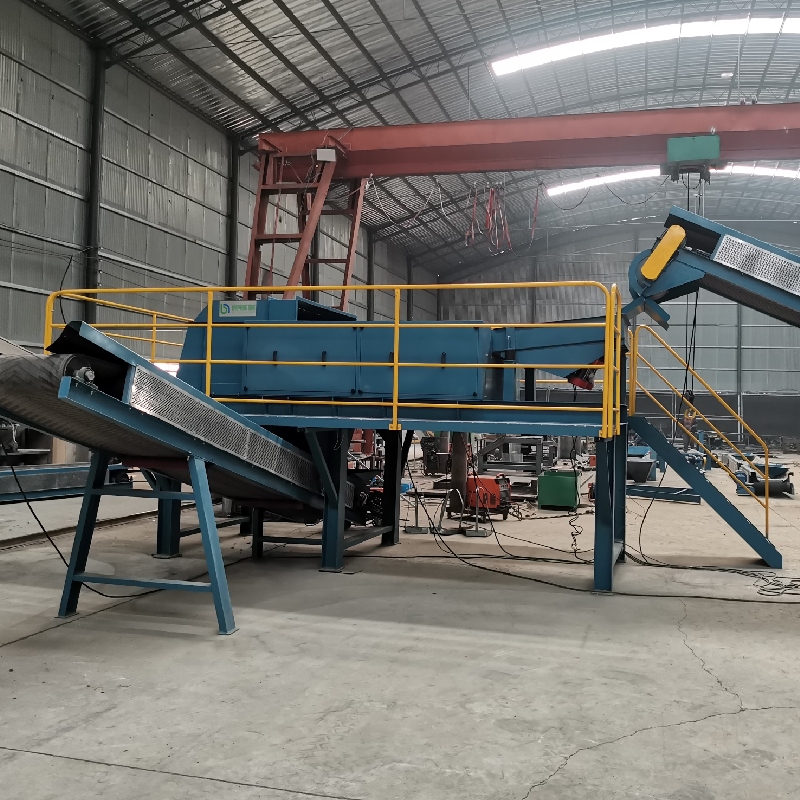
Eddy Current Separators excel in diverse recycling applications.
Operational advantages of incorporating an eddy current non ferrous metal separator are significant. These systems are inherently energy-efficient, with modern designs optimizing power consumption while maintaining high separation forces, leading to reduced operational costs. Their robust construction, often featuring high-wear-resistant components and corrosion-resistant materials (e.g., specific grades of stainless steel used in the petrochemical or water treatment industries for their anti-corrosion properties), ensures longevity and minimal maintenance downtime, even when processing abrasive materials. This durability translates into lower lifecycle costs and higher uptime for recycling facilities. Moreover, the high precision of eddy current separation dramatically improves the purity of recovered non-ferrous metals, making them more valuable in secondary markets and reducing the need for costly manual sorting or further refining. The environmental benefits are equally compelling: by maximizing metal recovery, these separators divert significant volumes of waste from landfills, conserving natural resources and reducing the carbon footprint associated with virgin material production. Their ability to integrate seamlessly into existing processing lines, coupled with customizable configurations, ensures adaptability to various operational scales and waste streams, solidifying their role as essential technology for advanced recycling and resource recovery.
Recognizing the unique challenges and varied material streams faced by different recycling operations, advanced manufacturers offer highly customized eddy current separator solutions tailored to specific client needs. This customization can involve adjusting the magnetic rotor configuration (e.g., eccentric pole system for broader particle size ranges, or concentric for fine fractions), modifying belt widths and speeds for specific throughput requirements, or integrating the ECS into a larger, multi-stage processing line. For instance, a facility dealing primarily with fine granulated plastics mixed with non-ferrous metal dust might require a high-frequency, small-pole rotor design, while an operation processing bulky construction and demolition waste would benefit from a wider belt and more robust mechanical structure. Our engineering teams collaborate closely with clients to conduct material analysis and operational assessments, ensuring that the final aluminium eddy current or general non-ferrous separation system delivers optimal performance for their unique input material and desired output purity. This bespoke approach maximizes efficiency and minimizes potential bottlenecks in the recycling process.
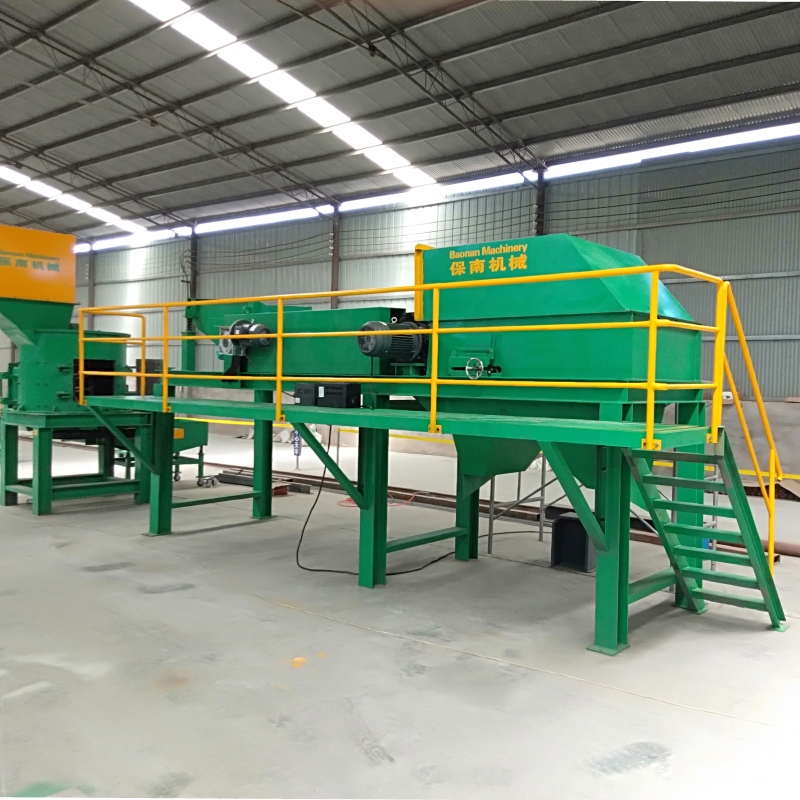
Mobile Eddy Current Separators offer flexible, on-site recycling capabilities.
A significant innovation addressing the need for flexibility and on-site processing is the development of the mobile eddy current separator. These self-contained units are typically mounted on a robust chassis, equipped with their own power unit (often diesel-electric), and designed for easy transport and rapid deployment. Mobile ECS units are ideal for temporary processing sites, construction and demolition waste recycling, scrap metal yards with fluctuating material volumes, or disaster recovery operations where immediate on-site separation is required. They eliminate the need to transport large volumes of mixed waste to a central processing facility, significantly reducing logistics costs and carbon emissions. Despite their mobility, these units maintain the high performance standards of stationary models, capable of efficiently recovering non-ferrous metals from diverse streams. The integration of magnetic separators for ferrous metal removal and vibrating feeders for optimal material presentation further enhances their versatility and efficiency. This adaptability, combined with robust construction for demanding conditions, makes mobile eddy current separation an attractive solution for businesses seeking agility and cost-effectiveness in their recycling operations, demonstrating a commitment to versatile, high-performance resource recovery.
Our unwavering commitment to delivering superior eddy current separator solutions is underpinned by decades of industry experience, robust R&D, and stringent quality control protocols. As a testament to our authoritativeness in the field, our manufacturing processes adhere strictly to international standards, including ISO 9001:2015 for quality management systems, ensuring that every unit produced meets the highest benchmarks for performance, reliability, and safety. We have served numerous clients globally, ranging from large-scale municipal recycling centers to specialized industrial facilities, with a proven track record of enhancing their metal recovery rates and operational efficiencies. Our long-standing partnerships with leading engineering firms and industry associations further solidify our position as a trusted provider. Rigorous testing data, derived from thousands of hours of operational simulations and real-world deployments, consistently demonstrates the exceptional separation purity and throughput capacity of our systems, often exceeding industry benchmarks. Our team of experienced engineers and technicians provides comprehensive support, from initial consultation and system design to installation, commissioning, and ongoing maintenance, ensuring seamless integration and optimal long-term performance for every eddy current separator aluminium or general non-ferrous metal recovery solution we provide.
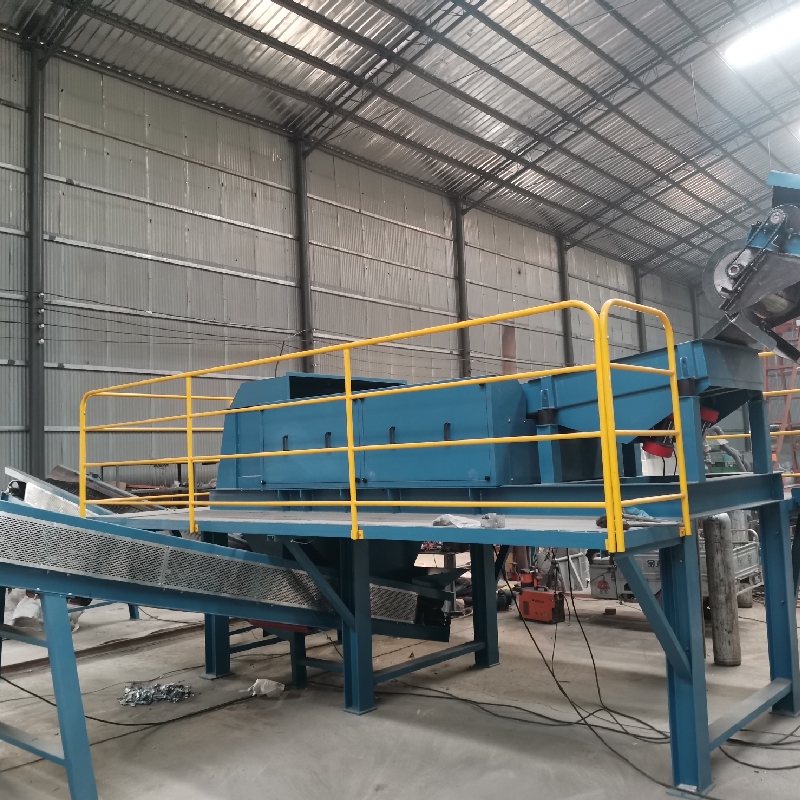
Our dedicated support team ensures optimal performance and customer satisfaction.
Our dedication to customer success extends beyond product delivery. We provide comprehensive training programs for client staff to ensure proficient operation and maintenance of the eddy current non ferrous metal separator, maximizing its lifespan and efficiency. Our customer support includes readily available spare parts, prompt technical assistance, and preventative maintenance services designed to minimize downtime and optimize operational continuity. We offer transparent delivery cycle explanations, typically ranging from 8 to 12 weeks depending on customization, and stand by our products with robust warranty commitments, demonstrating our confidence in the durability and reliability of our engineering. This holistic approach, encompassing expert consultation, superior product quality, and unparalleled after-sales support, underscores our unwavering commitment to building lasting partnerships and empowering our clients to achieve their resource recovery goals effectively and profitably. Our consistent positive client feedback and repeat business are a testament to our trustworthiness and expertise in the advanced separation technology market.
Q1: What materials can an eddy current separator effectively separate?
A1: An eddy current separator is primarily designed to separate non-ferrous metals such as aluminium, copper, brass, zinc, and other conductive materials from non-conductive streams. It is highly effective in applications involving mixed waste, shredded materials, WEEE, and incinerator ash, among others.
Q2: What is the typical lifespan and maintenance requirement for an ECS unit?
A2: With proper operation and routine maintenance, our eddy current separator units are engineered for an operational lifespan exceeding 10 years. Key maintenance involves periodic inspection of the conveyor belt, bearings, and magnetic rotor, as well as ensuring proper material feeding to prevent damage. We provide detailed maintenance guidelines and support.
Q3: Can your eddy current separator be integrated into existing recycling lines?
A3: Absolutely. Our eddy current separators are designed with modularity in mind, allowing for seamless integration into most existing recycling and processing lines. Our engineering team provides detailed integration plans and support to ensure compatibility and optimal performance, whether it's a new setup or an upgrade.
Q4: What are the main benefits of using an eddy current separator aluminium for aluminium recycling?
A4: Using an eddy current separator for aluminium recycling offers significant benefits, including high recovery rates (up to 98%), high purity of the separated aluminium, and substantial energy savings compared to producing primary aluminium. It drastically reduces landfill waste and increases the economic value of recycled materials.
Q5: What is your typical delivery and warranty policy?
A5: Our standard delivery cycle for an eddy current non ferrous metal separator typically ranges from 8 to 12 weeks, depending on customization requirements. We offer comprehensive warranty coverage on all our units, which includes parts and labor for a specified period, underscoring our commitment to product quality and client satisfaction. Specific terms are provided with each quotation.
The deployment of an advanced eddy current separator is no longer just an option but a strategic imperative for any entity committed to efficient resource recovery and environmental stewardship. From its sophisticated manufacturing process, employing high-grade materials and precision engineering, to its versatile applications across diverse waste streams, the ECS is a testament to innovation in recycling technology. Its unparalleled ability to separate non-ferrous metals with high purity and efficiency directly translates into significant economic advantages through increased material value and reduced operational costs, particularly in the recovery of high-value materials such as aluminium eddy current. By investing in these robust and reliable systems, businesses not only enhance their profitability but also make a tangible contribution to global sustainability efforts, reducing landfill burden and conserving finite natural resources. As the demand for recycled content continues to grow, and environmental regulations become more stringent, the role of the eddy current separator will only become more critical, solidifying its position as a foundational technology for a truly circular economy.
Latest news
Eddy Separator for Non-Ferrous Metals
NewsAug.22,2025
E Waste Bin for Collected Spray Cans: Sustainable Disposal Solutions
NewsAug.22,2025
Dual Shaft Shredder with Adjustable Blade Gaps
NewsAug.22,2025
Hammer Crusher Machine With Secondary Crushing
NewsAug.22,2025
Copper Granulator Our Promise of Recycling Excellence
NewsAug.22,2025
Industrial Shredders Crafted for E-Waste Recycling
NewsAug.22,2025